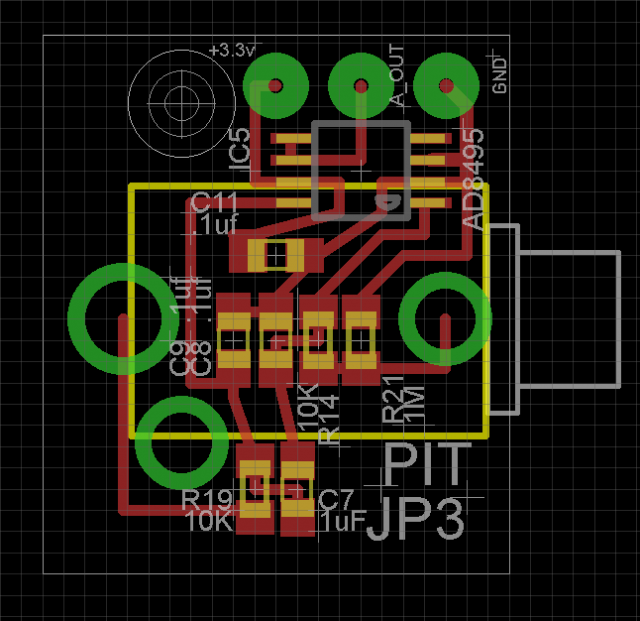RalphTrimble
TVWBB Diamond Member
But since nobody has this new board yet I was hoping for a design that could be employed in an add-on style to the standard HM board we have now?
It took me a while to dig them up, but here is what I used for the CDN probes, straight out of my hmcore.cpp:
{5.7079876e-4,2.1810467e-4,5.0643855e-8,2.17e+4}, // CDN Probes
Software side for themocouple is done? great! I just finished a rework (a minor one at that)of the HM 4.0 board to add the AD8495 circuit to the board. I opted to go with 603 size caps and resistors; I figure if I have to solder a MSOP8, 603s would be easy. Then I got to thinking it would be cool to make a 'mod chip' so that users could easily modify an existing HM4 to support K type thermocouples. I'm about to send that off to dorkbot today. I think cleaning up the silkscreen is/was harder than placing the components and routing the signals...
Which is what led me to this:But since nobody has this new board yet I was hoping for a design that could be employed in an add-on style to the standard HM board we have now?

Thanks Bryan. As you guessed, they didn't work.
I have an old analogue meter. I'm going to see if I can measure the resistance at some known temps, use this online calculator and see if I can obtain some coefficients. I'm really out of my element here. But, I'm going to give it a shot anyway. I have nothing to lose but a little time.
If it works, I'll post back.
Give this thermistor calculator a try, I found it to work really well.
http://www.thinksrs.com/downloads/programs/Therm Calc/NTCCalibrator/NTCcalculator.htm
